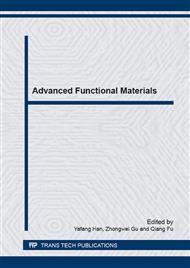p.342
p.348
p.354
p.359
p.367
p.373
p.379
p.385
p.390
Fabrication and Biological Properties of Bionic Structure Porous Alumina Ceramics with Spherical/Lamellar Pores
Abstract:
In order to solve the problem that low pore connectivity of the spherical porous ceramic, bionic structure porous alumina ceramics with spherical/lamellar pores were fabricated combining the adding pore-forming agent and two step freeze casting. The effects of fabrication parameters of the samples on morphologies, porosity and pore connectivity are investigated. The mechanical and biological properties of bionic structure porous alumina ceramics are also characterized. Results show that porous alumina ceramics with spherical/lamellar pores are obtained, and the lamellar pores pass through the spherical pores, which prove the pore connectivity reach 86.2 %. The mechanical properties are improved by porosity gradient from the inside (highly porous) to the outside (less porous) of porous alumina. Bionic structure porous alumina ceramics with spherical/lamellar pores have better cell growth and absorbance than those with spherical or lamellar pores only since its high pore connectivity.
Info:
Periodical:
Pages:
367-372
Citation:
Online since:
March 2015
Authors:
Price:
Сopyright:
© 2015 Trans Tech Publications Ltd. All Rights Reserved
Share:
Citation:


